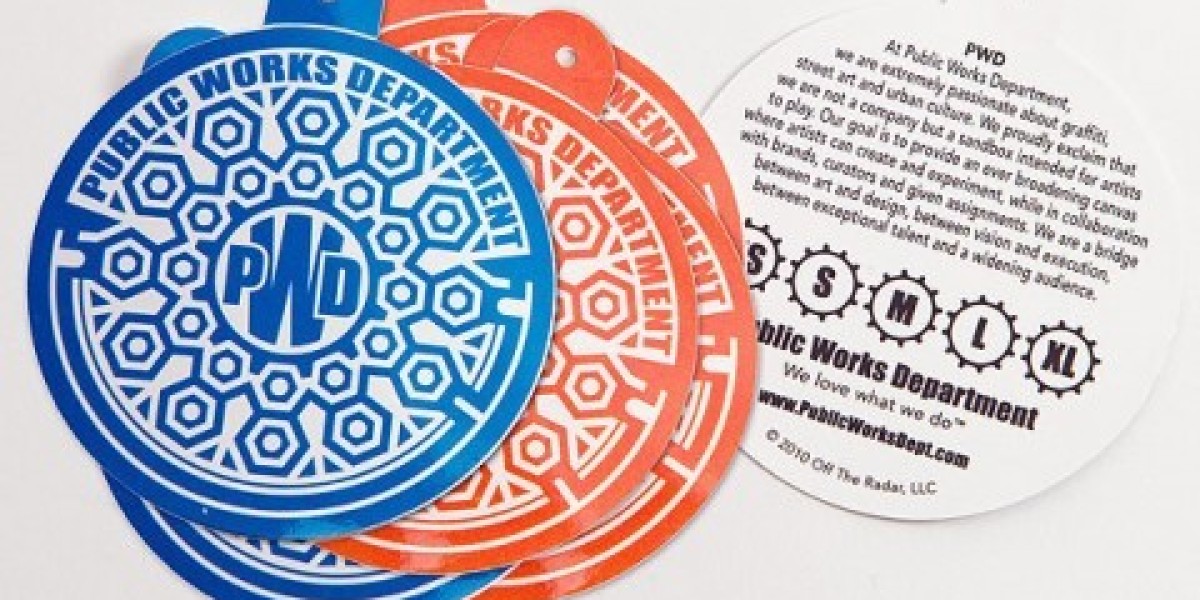Hang tags, often overlooked as mere product accessories, carry significant potential when it comes to branding and customer engagement. These small tags, attached to everything from garments to home goods, are powerful tools for communication, storytelling, and marketing. In many cases, they are one of the first brand touchpoints a customer encounters, and that first impression can leave a lasting impact. Understanding why hang tags matter is essential for any brand that wants to enhance its presence and foster meaningful customer relationships.
At their core, hang tags serve a practical purpose. They display essential product information like size, price, care instructions, and material details. However, beyond their functional role, they offer a prime opportunity to express your brand identity in a physical, tactile format. In an age where consumers are more conscious of where their money goes, what a brand stands for, and how products are made, hang tags can act as miniature billboards that answer these questions succinctly and effectively.
The importance of brand identity cannot be overstated. It is the soul of your business, the narrative that sets you apart from the competition. When consumers are faced with similar products on a shelf or scrolling through options online, brand identity is often the key factor influencing their final decision. A thoughtfully designed hang tag that reflects your brand’s voice, style, and values can convey professionalism, consistency, and trustworthiness. For instance, a sustainable clothing brand might use recycled paper for its Custom Hang Tags and include a short message about its commitment to ethical manufacturing. This not only reinforces the brand message but also aligns with the values of the target customer.
Hang tags also create an opportunity for storytelling, which is a key driver of emotional engagement. People are drawn to stories—they create connection and meaning. By including a short narrative about the brand’s history, mission, or product journey on the tag, you invite the customer into your world. This narrative element humanizes your brand, making it more relatable and memorable. A handcrafted soap company might describe how each bar is made in small batches by artisans, while a luxury fashion label might detail the heritage of its fabrics or the craftsmanship behind each piece. These small stories not only add value but give customers something to identify with and share.
Moreover, hang tags serve as a strategic tool for encouraging post-purchase engagement. Adding elements such as website URLs, QR codes, or social media handles on the tag can extend the conversation beyond the store. This opens up opportunities for customers to learn more, follow your brand online, share their experience, or even access exclusive promotions. In an era where social proof and user-generated content play a major role in brand growth, hang tags can be a launchpad for community interaction. For example, prompting customers to post photos with a branded hashtag can boost visibility and foster a sense of inclusion.
Another reason hang tags matter is their tactile nature. In contrast to the digital branding most customers are bombarded with, a hang tag offers a physical experience that engages the senses. The feel of the paper, the weight of the tag, and even the sound it makes when handled can communicate subtle messages about quality and attention to detail. A well-made hang tag can elevate the perceived value of a product, making it feel more premium or gift-worthy. On the other hand, a flimsy, generic tag might undermine the brand’s credibility, no matter how well-crafted the product itself is. This sensory aspect reinforces the idea that branding is not just visual—it’s a holistic experience.
Sustainability and authenticity are increasingly important to consumers, and hang tags offer a medium through which these values can be communicated directly. Brands that prioritize eco-friendly practices can use hang tags to highlight their efforts, whether it’s through the use of biodegradable materials, soy-based inks, or clear messaging about carbon-neutral production processes. Consumers who care about these values often look for visual cues and written proof, and a hang tag is a perfect platform for both. When done right, it not only educates the customer but deepens brand loyalty by aligning with their personal beliefs.
From a marketing standpoint, hang tags also offer flexibility and adaptability. They can be customized for seasonal promotions, special collections, collaborations, or limited-edition runs without having to redesign your entire product packaging. This makes them an efficient and cost-effective tool for adding fresh layers to your branding without disrupting the core identity. For example, a brand might include a special holiday-themed hang tag during the winter season that adds a festive touch while still staying true to its design language. This not only attracts attention but creates a sense of timeliness and occasion, encouraging impulse purchases and gifting.
Finally, hang tags create moments of intentionality in the customer journey. When someone picks up a product and takes the time to read the hang tag, they’re engaging on a deeper level. That moment is an opportunity for the brand to say something meaningful, build rapport, and ultimately influence the purchasing decision. It’s a touchpoint that transforms a simple transaction into a more thoughtful, memorable experience. In a retail environment where many brands compete for attention, the ability to hold a customer’s focus for even a few extra seconds is incredibly valuable.
In conclusion, hang tags are far more than functional accessories—they are dynamic extensions of your brand’s identity and communication strategy. They encapsulate your message, tell your story, and offer customers a tangible link to your values and vision. When designed with intention and creativity, hang tags can elevate a product, enhance engagement, and deepen customer loyalty. For brands seeking to make a lasting impression in a crowded marketplace, these small but mighty tags are a crucial element in the branding toolkit. Ignoring their potential means missing out on a unique chance to connect—and in branding, every connection counts.






